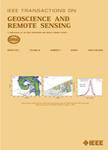版权所有:内蒙古大学图书馆 技术提供:维普资讯• 智图
内蒙古自治区呼和浩特市赛罕区大学西街235号 邮编: 010021

作者机构:CNR IROE I-50127 Florence Italy ESA ESTEC Ispra Italy Univ Florence Dipartimento Fis Florence Italy
出 版 物:《IEEE TRANSACTIONS ON GEOSCIENCE AND REMOTE SENSING》 (IEEE Trans Geosci Remote Sens)
年 卷 期:2001年第39卷第4期
页 面:873-884页
核心收录:
学科分类:0808[工学-电气工程] 1002[医学-临床医学] 08[工学] 0708[理学-地球物理学] 0816[工学-测绘科学与技术]
基 金:Associazione Elettrotecnica ed Elettronica Italiana European Commission, EC, (ENV4-CT96-0326) Agenzia Spaziale Italiana, ASI
主 题:backscattering model crop biomass synthetic aperture radar (SAR)
摘 要:The influence of the shape and dimensions of plant constituents on the backscattering of agricultural vegetation is investigated. Multifrequency multitemporal polarimetric data, collected at C- and L-bands by means of airborne and satellite synthetic aperture radar (SAR), showed that the relations between the backscattering of crops and the vegetation biomass depend on plant type, and that there are different trends for narrow and broad leaf crops. In the latter crops, backscattering increases with an increase in the biomass, especially at L-band, This behavior is typical of media in which scattering is dominant, whereas on narrow leaf plants, the trend is flat or decreasing, denoting a major contribution of absorption. Theoretical simulations obtained with a discrete element radiative transfer model have confirmed that a different backscattering of crops with the same biomass may be due to plant geometry.